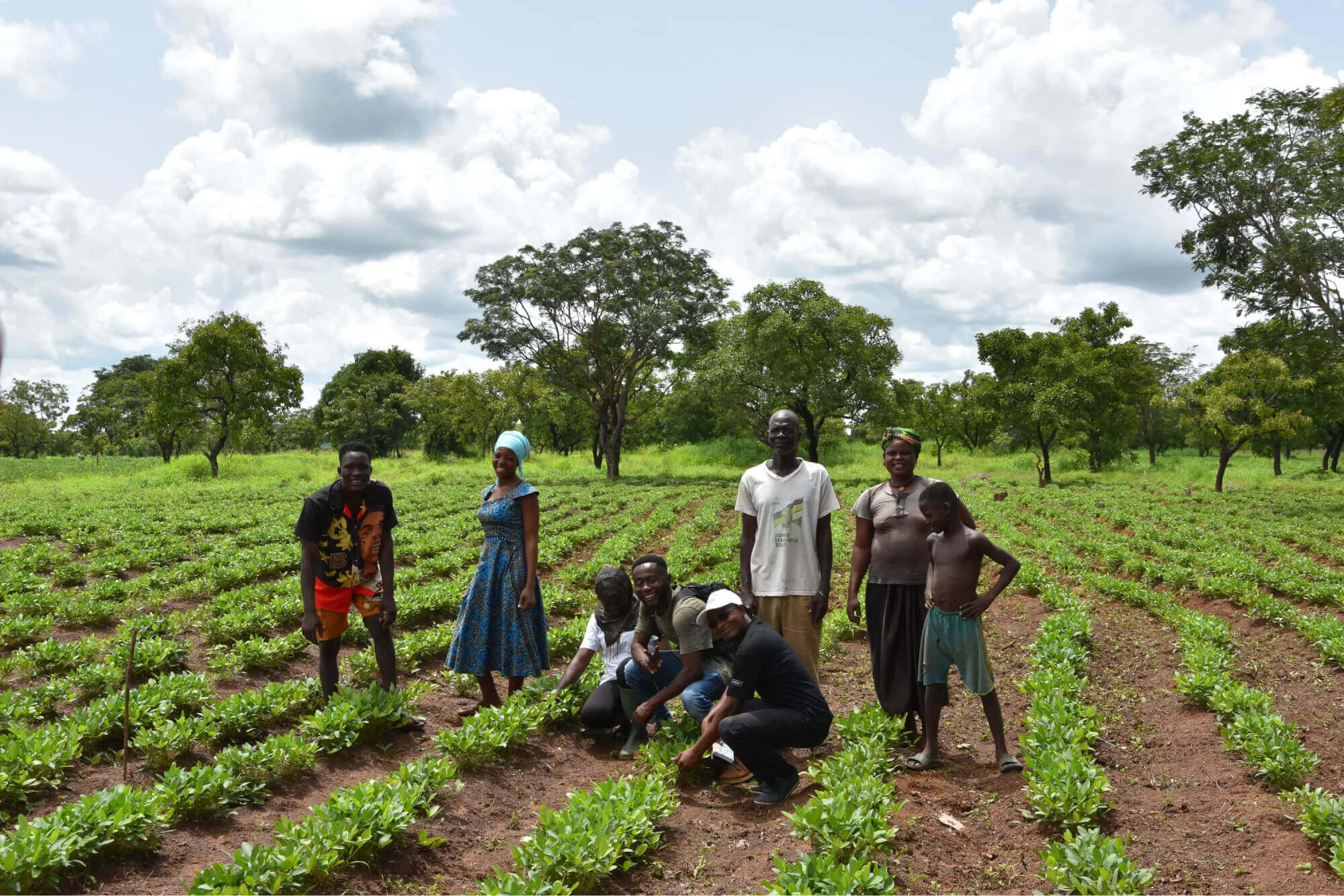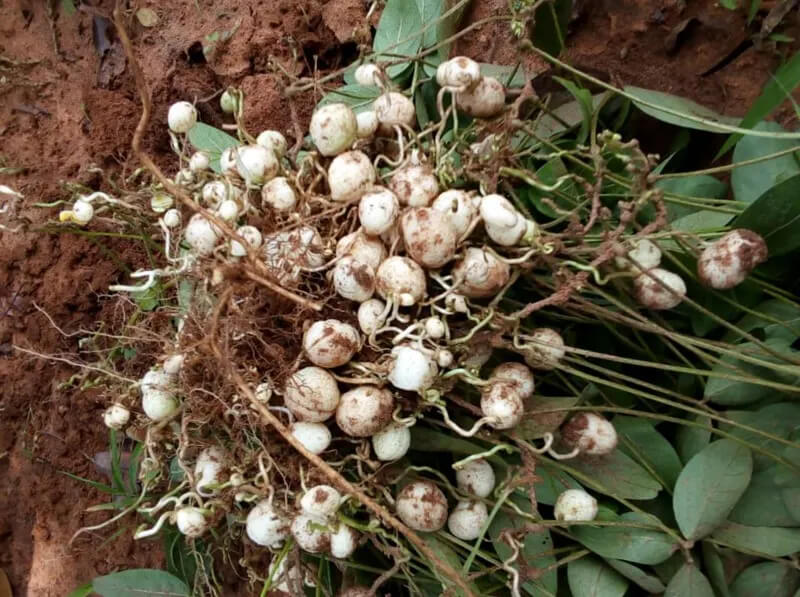Two months ago, we shared with you the first episode of our first BAMnut season.
Now, we are about three fourths of the way to harvesting ripe BAMnuts.
Are our BAMnuts growing healthily? Let me take you to the field.
How are our BAMnuts plants growing?

Our BAMnuts are flowering...
These last days I've been out in the field with our team members and it's a time of some reverence. It has filled me with some wonderful emotions. Our little Bambara groundnut plants are flowering!
But...they do so very quietly, in secret away from prying eyes, no big show. It feels a great privilege to witness it.
In fact, it's really interesting because the scientists who study the Bambara groundnut haven't really worked out what role the flowering plays in the development of the beans. That's because the beans are vegetative...that is, they're not seeds that form as a result of the flowers being pollinated. They grow as nodules on the roots with no link to the flowers.
So it is with great care that we lift the veil on this beautiful, reproductive process by gently moving away the leaves to reveal the little yellow flowers growing right at ground level. You don't see the flowers otherwise. It's as if the plants are modest and don't want to show that they're in reproductive mode. Yes, it's as if they're shy.
So...ever so carefully, so as to not embarrass the plant, we pull back the leaves and stems and look...there they are...

The fields are looking great. There are some areas that haven't germinated so well, here and there. But overall, we are blessed with fields of BAMnuts that seem to be prospering and growing just as we hoped.
They are healthy, growing at a normal growth rate, with bright leaves and those are the signs of healthy seedlings.

Apparently, this 2-month-old BAMnut was accidentally disturbed, I don't know how, but I'm SO glad it happened. To see those pods forming is extra magnificent. They're nice and large and so many of them. More to come too! The bushes will grow for at least another month so more pods will form.

So...like everything in farming, there are good outcomes, less good and bad. In some fields we've visited, we've seen generally good growth but in some cases, not such great germination. Our first season, we're learning every day and understanding what works and what isn't going so well will help us improve all the time.
Neem leaves – natural pesticide

While the BAMnuts are growing, some weeds may be growing at the same time. Hence farmers proceed to manual weeding with a hoe. There’s another phase which is organic pest control, but it’s only a phase that’s implemented if needed.
Our agricultural partner teams are training the farmers on how to prepare Neem pesticide from the Neem trees that grow everywhere in the region. It’s a great pest control and it’s organic. The idea is that if there’s a pest outbreak, then they’ll quickly prepare and spray the Neem liquid. They use the leaves and they’re very bitter so when it’s sprayed on the crop, the insects don’t like it.
You wonder how it is that this traditional knowledge has been lost. The answer lies, in part, with all the aid projects here over generations that have pushed chemicals on the farmers, telling them this "modern" farming is best.
These pictures are from Bimbilla and Yendi. It’s a training to show how to make natural Neem leaves pesticide for organic pest control.
Will we get healthy BAMnuts for our BAMnut Noodles and BAMnut Milk? Will we see more life in this soil after growing this first season?
Stay tuned for the next episode of our BAMnut series!
What's next?
Read all about the mighty BAMnut and its journey to your kitchen here.
Learn more about the show-stopping nutritional profile of BAMnut here.
Discover how biochar plays an important role in reducing our carbon footprint here.
Find out how we create a Better Better with our partner farming communities here.




